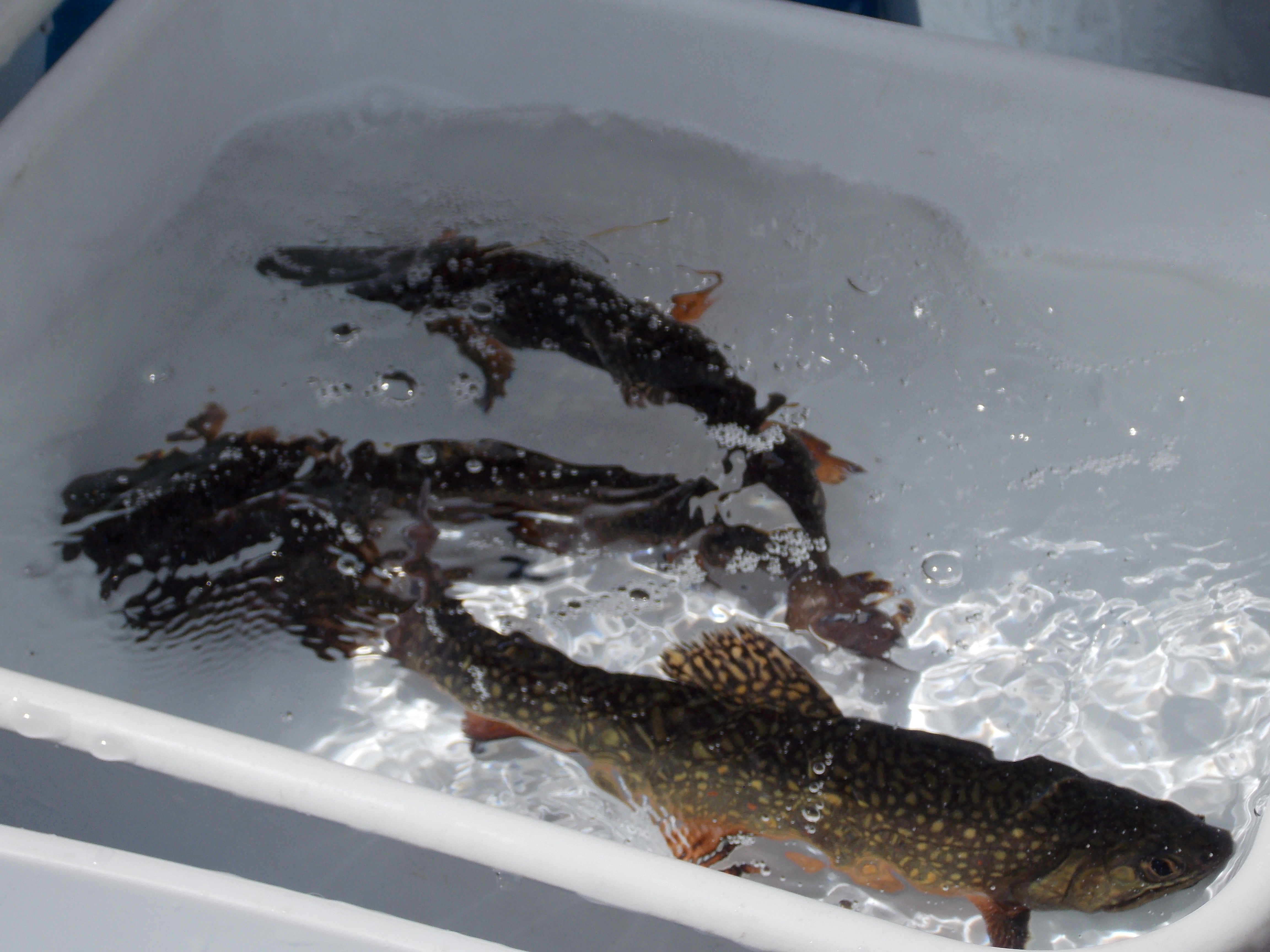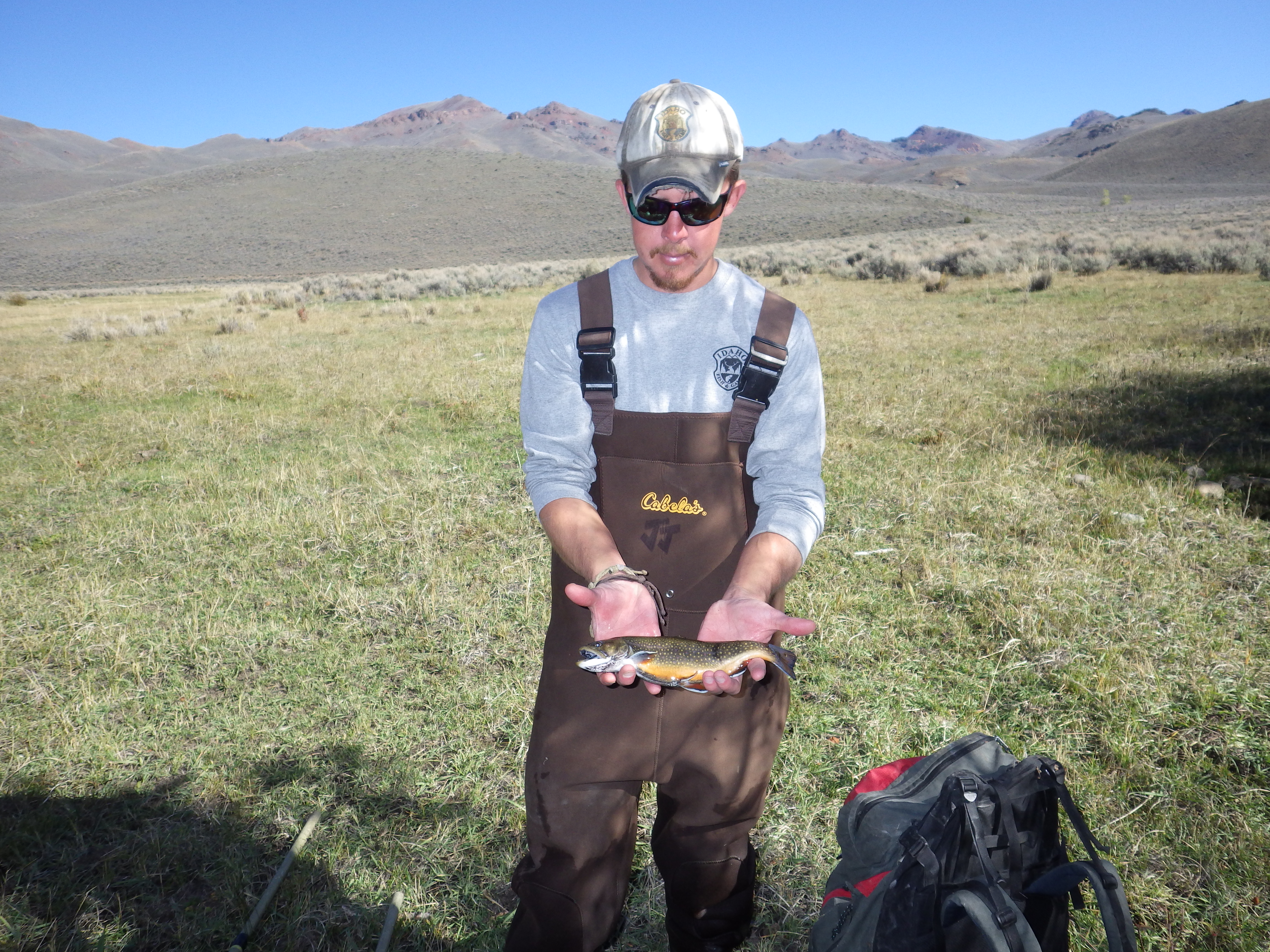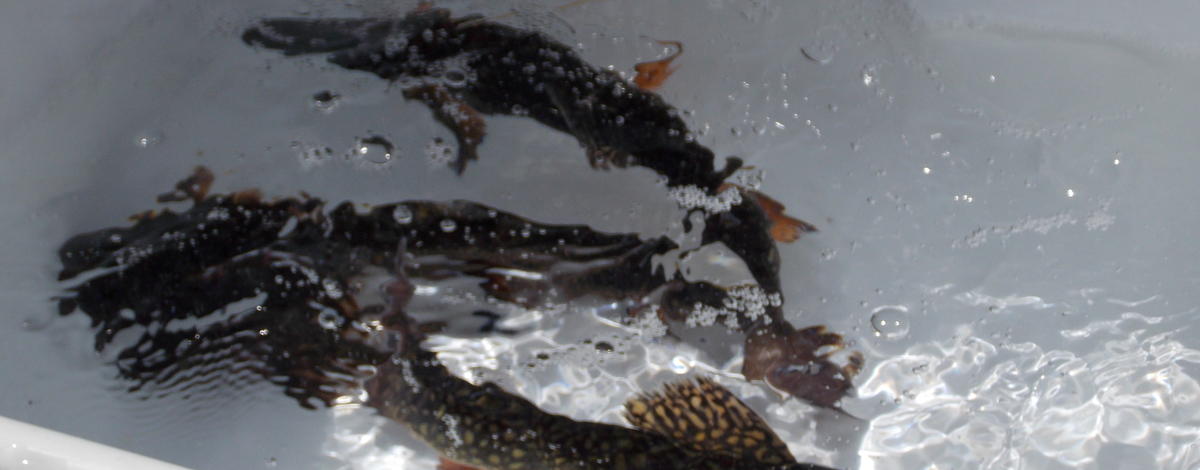Hatcheries have long been used to replenish and restore fish populations, but can they also be used to reduce or eradicate them? Idaho Fish and Game researchers are studying whether using traditional hatchery technology in a nontraditional way can eliminate unwanted fish populations in the wild.
Fish and Game researchers and hatchery staff are collaborating on a project using 50 year-old technology to develop a monosex fish population whose offspring can only produce males. These males have two YY chromosomes (YY) rather than the usual XY arrangement.
Stocking YY-male hatchery fish into a body of water with an undesired fish population could change the sex ratio to all males within a few generations, and the unwanted fish population would eventually fail to reproduce and therefore die off. Once accomplished, Fish and Game would stop stocking those fish and fisheries managers would then restock that body of water with a more desirable fish species.

Brook trout were selected for the first YY project because they are short lived and quick to sexually mature, which enables researchers to rapidly produce the hatchery broodstock and test the technique in a natural environment. Brook trout are also good candidates because they are nonnative, frequently overpopulate, and stunt in both lakes and streams, which means fish are too small to be of interest for most anglers.
The YY technique begins in a hatchery, where young brook trout are exposed to low-doses of a naturally occurring female hormone, estradiol, which has no effect on female fish, but causes male fish to produce eggs when they mature. The egg-producing males are crossed with standard males, which produce about 25 percent YY-male offspring. Those offspring are used to produce another generation that will theoretically produce exclusively male offspring when bred with any other brook trout.
Brook trout produced in the program for stocking in the wild are not exposed to any hormones and appear like all other brook trout, but they carry two male chromosomes instead of one.
While it sounds complex, it’s a fairly simple method of using hormones to affect gender in a segment of the population, then selectively breeding them to get an entire population to produce one gender. It’s routinely done in commercial aquaculture hatcheries to raise identical-looking food-fish, increase growth rates, and control reproduction.
If the program with brook trout proves successful, the “YY male” method could eradicate or limit other undesirable fish species in select waters, perhaps even large bodies of water with carp infestations, or other unwanted fish that limit game fish populations and harm habitat.
Fish and Game has long used fish toxicants to eradicate unwanted fish from entire bodies of water, but toxicants are typically limited to smaller bodies of water, such as ponds, small lakes and reservoirs or small streams.
Netting, trapping, and other fish removal methods also rid waters of unwanted fish, but those efforts are rarely a long-term solution because a few fish usually escape and spawn successfully. All those methods are time consuming, labor intensive, and often have to be repeated years later when unwanted fish populations rebuild.
Fish and Game officials hope the YY-male approach will be a cost-effective technique to control undesirable fish populations. Gary Byrne, the Fish Production Manger overseeing the hatchery portion of Idaho’s YY brook trout program, said it only took four years to develop the YY brook trout broodstock.
Head Fisheries Researcher Dan Schill, who led the team conducting the research project, said they are encouraged by the low cost of broodstock development, and they hope the technique will curb brook trout populations in waters where it’s being tested.
“The proof will be in the pudding over the next few years when our research staff obtain results confirming whether stocked YY fish successfully spawn in the wild and are ultimately effective in reducing the percentage of wild female brook trout in test waters,” Schill said.

Stocking trials of YY Brook Trout in four Idaho streams began in 2014, and the first results are encouraging. A marked YY Male was observed actively spawning in October with a wild female, and testing done on wild fry in study streams in 2015 conclusively showed that some YY males successfully spawned. Of equal note, all progeny of stocked YY fish found were XY males, exactly as predicted and as investigators hoped.
Fish and Game officials presented their findings at the August 2016 American Fisheries Society (AFS) national meeting in Kansas City, which has generated excitement in the fisheries science community. There, the AFS announced Fish and Game’s YY Male Brook Trout Research Program won the 2016 Sport Fish Restoration Outstanding Project award in the category of Research and Surveys.
The awards highlight the importance and effectiveness of the sport fish restoration program and recognize excellence in fisheries management, research and education.
Questions and answers about the YY-male fish program
Q: I understand the basic method of producing YY males in the hatchery, but how does the process of eliminating an undesirable fish population work in an actual stream or lake?
A: In natural fish populations, females have two X sex chromosomes (XX) and males have an X and Y chromosome (XY). When two wild fish spawn, offspring can only inherit one sex chromosome from each parent. Offspring receive an X from the female because that’s all she produces. Half the progeny receive an X from the male side and half receive a Y, which produces a 50:50 sex ratio.
When a hatchery-produced YY male spawns with a wild, XX female, all the progeny inherit one Y from the male and one X from the female and therefore would all be XY males. The basic idea is to continue stocking YY Males into the wild population until all the fish in the water are male, then stocking would end and the population would consequently die off.
Q: Is Fish and Game trying to eradicate all brook trout?
A: No, that’s not the intent of this program. While there is interest in eliminating brook trout in specific waters where they severely impact native species or stunt and become undesirable to anglers, this is primarily an effort to test the basic YY male concept in small, isolated waters. Anglers will continue to find hundreds of streams and mountain lakes in Idaho with wild Brook Trout populations.
Q: Are these brook trout being stocked considered a GMO?
A: No. Because no genes are “spliced” into the target fish genome from another fish species, the YY male fish produced are not genetically modified organisms (or GMO’s), a plus that has been noted by the authors of several recent scientific papers reviewing the YY male approach.
Q: What happens if someone eats a fish that’s been exposed to estradiol.
A: Fish exposed to the hormone in the program remain in enclosed hatchery production silos and are never stocked so it’s virtually impossible for that to occur. However, the doses given to tiny fry are very low and the 100 percent clearance rate from tissues is a matter of days, well over a year before fish become a size of interest to anglers. For these reasons, it is inconceivable that an angler or other animals would be exposed to estradiol, which is a common and frequently used human prescription drug that’s also used in aquaculture.
Q: Could the YY approach lead to eliminating other types of unwanted, non-native, or nuisance fish?
A: Although not the goal of the current program, Fish and Game is always trying to find ways to improve fishing and water quality. Where an undesirable species is limiting fishing opportunity, this is one method that could be attempted if the present experiments on Brook Trout prove successful.
Q: Is it reversible if for some reason you wanted that fish back?
A: Yes. All Fish and Game would have to do is stop stocking YY fish and the population would return to a normal 50:50 sex ratio.
Q: How long would it take for the population to go all male?
Preliminarily, it looks like in the case of brook trout in streams, somewhere between four and 10 years will be the answer depending on number of fish stocked, etc. There are scenarios where it might take longer, but in those instances, it is unlikely that such an approach would be deployed. F&G biologists are in the process of submitting work on this exact question for publication in a fisheries journal where it will receive careful peer review.
Q: Why wouldn't you allow anglers to reduce unwanted fish populations?
A: We generally employ high bag limits (or remove bag limits all together) to encourage angler harvest on undesirable fish species. These new techniques won't replace that. Netting, trapping, and other fish removal methods can also be used to rid waters of unwanted fish, but those efforts are aren't silver bullets because a few fish can escape and spawn successfully. All those methods are time consuming, labor intensive, and may need to be repeated years later when unwanted fish populations rebuild. This new approach may make it impossible for populations to rebuild after they are suppressed.

